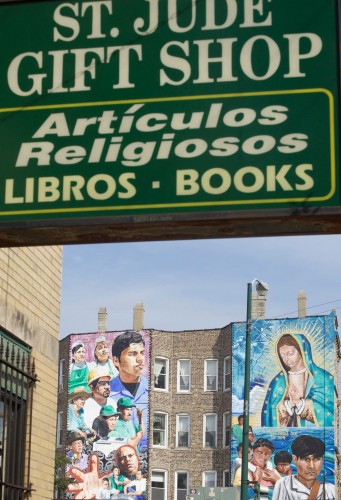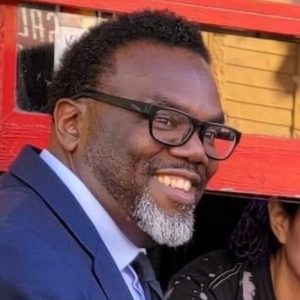
The steps and walls of Pilsen are covered in color. Murals of Mayan and Aztec mythology converge with images of family barbeques, local heros, and the Virgin Mary.
One such mural is that of Our Lady of Guadalupe, a Mexican icon.
Six hundred years ago in Mexico, when indigenous people weren’t allowed to enter the Catholic Church, a native peasant, Juan Marco, experienced a vision of the Virgin Mary, who spoke to him in his native language. That vision of Mary evolved into Our Lady of Guadalupe, the now patron saint of Mexico, who continues to inspire and empower Mexicans to this day.
Esther Castaneda, a worker at a currency exchange on Ashland Avenue spoke of the feast for Our Lady of Guadalupe every Dec. 12 at one of the five Catholic churches in Pilsen.
“People bring music, roses and offerings to the church around 4 a.m. every year,” Castaneda said. “The church is packed.”
The Fr. Brendan Curran, pastor of St. Pius V Parish said that the importance of Our Lady of Guadalupe is more than the original story.
“It’s not because of something that happened on a hill 600 years ago,” Curran said. “It’s a story of empowerment that continues to empower people today.”
Our Lady of Guadalupe is one of many Catholic saints that the people of Pilsen cherish and pray to regularly.

Rosamaria Gonzalez has worked at the Currency Exchange in Pilsen for 25 years. She keeps a picture of St. Jude taped to her teller window that she sits at while customers come into the business.
“Some consider him the saint of miracles,” Gonzalez said. “If somebody wants a job or something else, they pray to St. Jude, and they get it.”
Liz Leon spoke of St. Joseph, the patron saint of Michoacan, a city in Mexico and the place where her parents are from. When her 3-year-old niece was diagnosed with cancer, Leon said she immediately began praying to St. Joseph.
Joanna Masters, 21, works at her grandfather’s bakery every day, selling “pastels” on the sidewalk for $5.
“I’m not too religious,” Masters said. “My family, like my parents and grandparents, are extremely Catholic though.”
Masters spoke of Santo Niño de Atocha, the saint people pray to that are trying to have children and start a family. She said that when people in her family start to have kids, they pray to Niño de Atocha regularly.
Susana Martinez said she has never prayed to Niño de Atocha, and that she primarily prays to St. Jude.
Martinez works in the St. Jude Gift Shop across from the St. Pius V Parish. She said most of the people that come into the shop are looking for artifacts that depict the saint.
Part of the focus on St. Jude is due to the belief that that specific parish has the arm bone of the saint.
Alfredo Hernandez has worked at the same gift shop for seven years. He used to be a monk in Mexico, but left to start a family in the United States.
“I wanted to get married, have kids,” Hernandez said. “My superior wanted me to follow the strict doctrine and that’s not reality. For me, the religion in Pilsen is like a new fashion. It’s all interpretation.”
Because Hernandez is originally from Mexico, he spoke mostly in Spanish, and talked about the limitation a strict practice of religion can put on a person.
Hernandez switched from Spanish to English and back again to convey that religion needs to be personal.
“Cuando tenemos un idealismo sobre religión, no vivimos una vida buena,” Hernandez said.
Which, in essence, means: “When people follow religion too strictly, and aren’t open to other’s beliefs, they aren’t living a good life.”
James Foster contributed reporting.








Be First to Comment